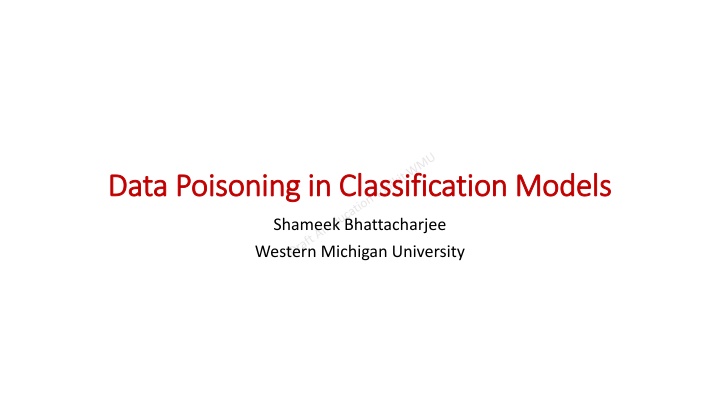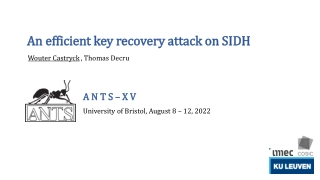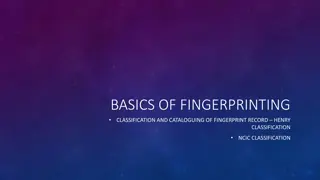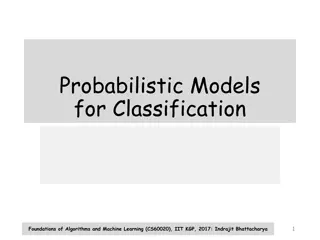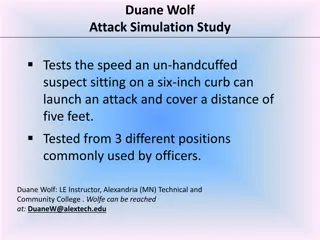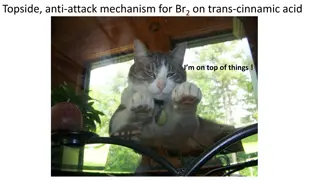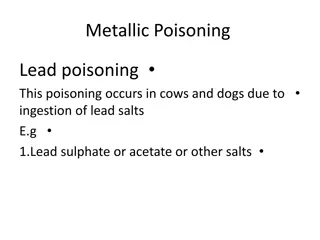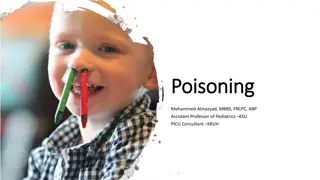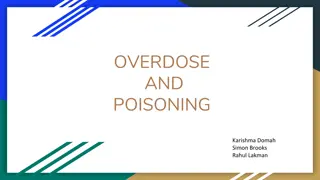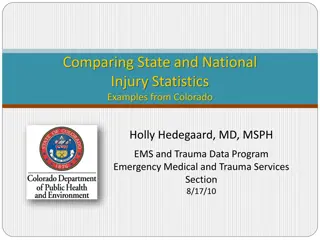Data Poisoning in Classification Models: Understanding Attack Techniques
Uncover the intricate world of data poisoning in classification models through detailed insights into various attack methodologies and visualization techniques. Explore the fundamentals of data poisoning attacks in AI and gain a comprehensive understanding of binary search poisoning attacks. Dive into the nuances of changing training data points to manipulate model predictions and comprehend the core goals and strategies used by attackers to flip labels.
Download Presentation

Please find below an Image/Link to download the presentation.
The content on the website is provided AS IS for your information and personal use only. It may not be sold, licensed, or shared on other websites without obtaining consent from the author.If you encounter any issues during the download, it is possible that the publisher has removed the file from their server.
You are allowed to download the files provided on this website for personal or commercial use, subject to the condition that they are used lawfully. All files are the property of their respective owners.
The content on the website is provided AS IS for your information and personal use only. It may not be sold, licensed, or shared on other websites without obtaining consent from the author.
E N D
Presentation Transcript
Data Poisoning in Classification Models Data Poisoning in Classification Models Shameek Bhattacharjee Western Michigan University
Data Poisoning on Classification Models Data Poisoning on Classification Models Training Data Instances ? ? (Note ? is a vector with multiple features) ? ???? Meaning there are ? training instances and ? dimensions in the training data Output class label ? {+1, 1} + 1 = ???????? ????? 1 = ???????? ????? Classification Model you are trying to train ?
Basic Anatomy of a Data Poisoning in AI Basic Anatomy of a Data Poisoning in AI Let the actual predicted label (??) for a candidate target training data instance (say ??) be: ??= ? ?? Instance of a Data Poisoning Attack is for any target point ?? ; GOAL: change training data in a way such that ?? s predicted class is flipped to ??= ? ?? ? = {??,? ?,? } where ? ? Attackers insert m no. of such perturbed instances ? the upper bound on the number of training instances the attacker could manage ? set of poisoned data instances/examples, each instance ?? in this set is a vector of length ? After inserting ? perturbed instances, the xtwill become part of the attacker s desired class because the threshold will be influenced by the m perturbed instances towards xt ( ??) is called the desired class
Visual Intuition of Poisoning Attack Goal Visual Intuition of Poisoning Attack Goal Actual class ?? of the target ?? Poisoning GOAL: Change data points in such a manner so that the dotted threshold line (fancily ?) is to the right of ?? aka flipping the label of ?? from ?? to ?? Desired class ?? of the attacker
Binary Search Poisoning Attack (BSA) Binary Search Poisoning Attack (BSA) For each iteration do if (b < B) Locate nearest neighbor in attacker s desired class Find the midpoint between ?? and its nearest neighbor ??? ???? is your poisoning candidate instance if (???? == desired class of attacker (- ?? in this case)) Then it is a valid poisoning instance. Append ???? to the original training dataset, b=b+1 (b=current no. of appended poisoned instances) Model is re-trained ?1; Note ???? is your nearest neighbor now Stopping Condition: Generate new poisoned instances iteratively until ??? ???? (a) the target label is flipped i.e. ??(??) = - ?? OR (b) if attacker exceeds B poisoned instances (i.e. b > B)
STING RAY Attack (SRA) STING RAY Attack (SRA) Inserts new copies of existing data instances by perturbing less-informative features. The main difference with BSA how poisoning instances are generated A base instance (near the target ?? ) in the desired class is selected A copy of the base instance is created as a poisoned candidate. Use some feature importance measures A subset of features are selected for value perturbation on the poisoned candidate. After trying to perturb the feature values, the poisoned instance closest to the target is inserted into the training data ??? Note perturbation may not be very high, (some bound is there) Same stopping condition as BSA
How bad or good are such attacks? (Complexity) How bad or good are such attacks? (Complexity) Two metrics to quantify goodness of data poisoning attacks 1. Decision Boundary Distance(DBD) 2. Minimum Cost for a Successful Attack (MCSA) Decision Boundary Distance(DBD): shortest distance from a data instance and a decision boundary difficult to derive exact DBD from classifiers especially in non-linear classifiers Assume a unit ball centered at the data instance, Then uniformly sample a set of unit direction vectors from the ball. For each vector, perturb the original instance along the vector iteratively with a fixed step length, Predict the class label with the classifier, and stop if the prediction is flipped. Record the number of perturbation steps to the decision boundary. Product of step length and the minimum steps among all the directions is estimated DBD for each data instance.
DBD: Illustration DBD: Illustration
Minimum Cost for Successful Attack Minimum Cost for Successful Attack Minimum number of insertions required to attack a data instance. Per data instance metric MCSA is the number of poisoning instances that must be inserted for a successful attack under an unlimited budget. The MCSA value is dependent on the attack algorithm Reported in some literature as poisoning rate, the number of poisoning instances relative to the original number of points
Ways to prevent this problem Ways to prevent this problem To broad ways to approach : 0. Need to know the attacks, and why models fail? 1. Make existing methods robust to minimize damage. 2. Re-design new methods which are: 2a) aware of these problems. 2b) immune to these problems. Conclusion: Need to diagnose the security risks and impacts first before protection
Reference: Y. Ma, T. Xie, J. Li and R. Maciejewski, "Explaining Vulnerabilities to Adversarial Machine Learning through Visual Analytics, in IEEE Transactions on Visualization and Computer Graphics, vol. 26, no. 1, pp. 1075-1085, Jan. 2020,
